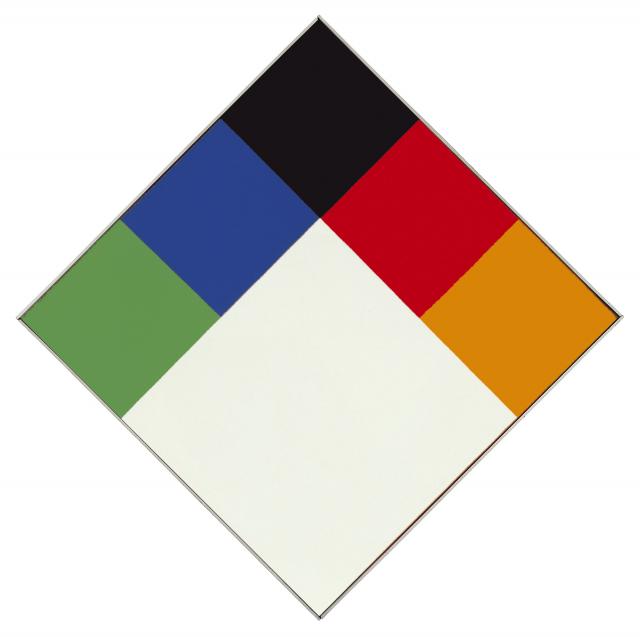The artistic world of Max Bill is based on rational principles with mathematics as its reference and, as its starting point, the ideas of Theo van Doesburg, the first theoretician of Concrete art. Reformulating these principles in 1936, Bill made clear his desire to go beyond an intuitive approach and replace it with logical structures whilst avoiding any reference to the world of appearances.
Having become the principal protagonist of Concrete art’s activities in Zurich, Bill defended a concept of beauty as both emerging from function and existing as function, an idea that he was to develop in a 1949 essay. According to Bill, “concrete composition is composition which develops according to its own means and its own rules, without basing itself on natural phenomena, without transforming those phenomena, that is, without the intervention of a process of abstraction.” This principle led him to use only geometrical forms, which are in essence devoid of any content beyond themselves.
The expressiveness that pervades his canvases results from the meticulously studied combination of colours placed according to an order determined by logical operations: “Concrete sculptures and paintings entail creating something that is open to visual perception. Optical creation is therefore based on colour, form, space, light and movement.” Rationalism then doesn’t preclude the emergence of a poetic state, which Bill sought to create, moreover.
As Valentina Anker stresses, “Bill’s art doesn’t require decrypting a formula. And although it is governed above all by mathematical principles, it mobilises our perceptive faculties by working from visual facts essentially.” Thus, unlike what one might think, this logical art, the outcome of calculated arrangements, doesn’t impose its rigidity. This is so thanks to colour by and large, the final refuge of the immeasurable, a place where the incalculable can spring up, which Bill uses to lend energy to his compositions, play with echoes and successions, and let rhythm emerge.
Having become the principal protagonist of Concrete art’s activities in Zurich, Bill defended a concept of beauty as both emerging from function and existing as function, an idea that he was to develop in a 1949 essay. According to Bill, “concrete composition is composition which develops according to its own means and its own rules, without basing itself on natural phenomena, without transforming those phenomena, that is, without the intervention of a process of abstraction.” This principle led him to use only geometrical forms, which are in essence devoid of any content beyond themselves.
The expressiveness that pervades his canvases results from the meticulously studied combination of colours placed according to an order determined by logical operations: “Concrete sculptures and paintings entail creating something that is open to visual perception. Optical creation is therefore based on colour, form, space, light and movement.” Rationalism then doesn’t preclude the emergence of a poetic state, which Bill sought to create, moreover.
As Valentina Anker stresses, “Bill’s art doesn’t require decrypting a formula. And although it is governed above all by mathematical principles, it mobilises our perceptive faculties by working from visual facts essentially.” Thus, unlike what one might think, this logical art, the outcome of calculated arrangements, doesn’t impose its rigidity. This is so thanks to colour by and large, the final refuge of the immeasurable, a place where the incalculable can spring up, which Bill uses to lend energy to his compositions, play with echoes and successions, and let rhythm emerge.
